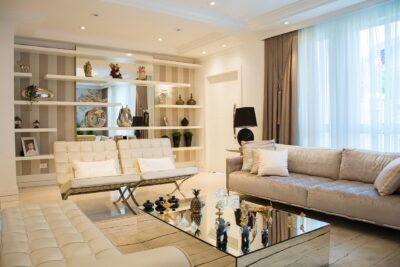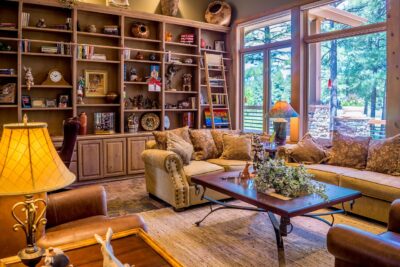
How to Retrofit Old LED Fixtures with Modern Covers
How to Retrofit Old LED Fixtures with Modern Covers By Aman | Updated on April 15th 2025 LED lighting has pretty much taken over the
Home » How to Retrofit Old LED Fixtures with Modern Covers
LED lighting has pretty much taken over the modern lighting scene. It’s bright, energy-efficient, and way easier on the eyes compared to those buzzing fluorescent tubes we all grew up with. But not everyone has the budget to tear out an entire lighting system just to install the latest models. That’s where retrofitting comes in.
Retrofitting old LED fixtures with modern covers isn’t just about aesthetics. It’s about upgrading functionality, boosting energy efficiency, and breathing new life into tired setups—without blowing the budget. Whether it’s for an office ceiling, a shop floor, or your garage, retrofitting is a solid, future-forward solution.

So what does it mean to retrofit an LED fixture? In simple terms, it’s upgrading an existing lighting fixture with new LED-compatible components or covers—rather than replacing the whole thing. Think of it as giving your lights a makeover instead of moving them out.
This method lets you extend the lifespan of your fixtures while unlocking all the benefits LED tech has to offer: lower power usage, better light quality, and a more eco-conscious setup. And yeah, it’s kinder to your wallet too.
The environmental angle is big. LED retrofits reduce landfill waste (less stuff tossed out), and the energy savings can be massive over time. Businesses especially are jumping on this because it’s not just greener—it’s cheaper in the long run.
Before diving in, pause and scope out what’s already in place. Are your fixtures compatible with LED kits? Are they structurally sound? Are there any issues like discoloration, brittleness, or poor fit?
Start with an audit—walk the space, take notes, maybe even some photos. Then, move on to choosing your retrofit kit. That’s where things get a bit technical:
Rule number one: shut off the power. At the breaker. Don’t just flip the switch and hope for the best. Use a voltage tester just to be safe. If something seems sketchy, call an electrician—seriously.
Depending on the type of fixture you have, removal could be simple or a bit of a puzzle. Remove any bulbs, then unscrew or unclip the fixture body. Carefully detach wires and set everything aside.
Give the area a good clean—dust and debris can mess with performance. Check for cracked mounts or loose connections. Fix what needs fixing.
Follow the instructions in your kit (yes, read them). Typically, you’ll:
Double-check connections and screw everything down tight.
Not all LEDs are dimmable—and even when they are, you might need a compatible dimmer switch. Check product details carefully. The last thing you want is flickering lights or a burned-out switch.
2700K to 3000K is warm and cozy. 4000K is neutral, great for working. 5000K+ is bright white, almost daylight level. Choose based on the vibe you’re going for.
Look for ENERGY STAR, DLC, or UL ratings. These badges tell you the kit’s been tested for safety and efficiency. Plus, they’re sometimes tied to local energy rebates.
Sometimes things don’t go smoothly. A few common hiccups:
A little patience and prep go a long way. And when in doubt, ask a pro.
Here’s where it gets fun. Once you’ve got the right LED setup, it’s more than just light—it’s a design tool. You can:
Let’s say you run a small retail shop. You retrofit your outdated fluorescent fixtures with LED strip kits and install clear, prismatic covers. Suddenly, everything looks brighter, cleaner, and more high-end. That’s the power of good lighting.
LEDs last a long time—but nothing lasts forever. Here’s how to keep things running smoothly:
If a cover warps or yellows, swap it out. Modern light covers from experienced vendors (especially those who do molded or vacuum-formed solutions) make replacements simple.

Retrofitting old LED fixtures isn’t just about saving cash—though that’s a big perk. It’s about upgrading the quality of light in your life. It’s about reducing waste, saving energy, and staying current with minimal effort.
And when it comes to finding well-made replacement covers or custom diffusers? Fluorolite Plastics has been at it for over four decades. With options for commercial, industrial, or residential projects, it’s easy to find solutions that actually fit—and last.
It depends on the fixture type and the retrofit kit, but you’re looking at anywhere from $25 to $100 per unit for most standard setups. Bulk orders or custom jobs can bring costs down.
Most good-quality kits can last anywhere from 30,000 to 50,000 hours. That’s several years of solid use, even if you keep the lights on all day.
Not usually. If you’re handy with basic tools and follow instructions, it’s a manageable DIY project. That said, always take electrical safety seriously.
Absolutely. LEDs use up to 80% less energy than old-school incandescent or fluorescent options. Retrofitting is a great way to bring older setups up to modern standards.
Start by checking wire connections and making sure the power is fully off/on during the reset. Also, inspect the dimmer compatibility and check for faulty drivers.
There are quite a few, but what really matters is choosing something that fits your fixture and meets your lighting goals. For light covers and diffusers—especially molded or custom ones—Fluorolite Plastics is a solid choice, offering quality parts built for long-term use.
Not all fixtures are suitable, especially if the housing is damaged or not up to code. But most recessed lights, troffers, strips, and wraparounds can be upgraded.
Usually not for minor replacements or upgrades, but it’s always a good idea to check local building codes—especially for commercial spaces.

How to Retrofit Old LED Fixtures with Modern Covers By Aman | Updated on April 15th 2025 LED lighting has pretty much taken over the

How to Prevent Yellowing and Cracks in LED Fixture Lenses By Aman | Updated on April 15th 2025 You’ve probably seen it before—those once-clear LED

How to Choose LED Fixture Lenses for Harsh Industrial Environments By Aman | Updated on April 8th 2025 Ever stepped into a factory or a
"We've Got You Covered" and Trace n'Fax are Registered Trademarks of Fluorolite Plastics, LLC. © 2011-2024 All rights reserved Fluorolite Plastics